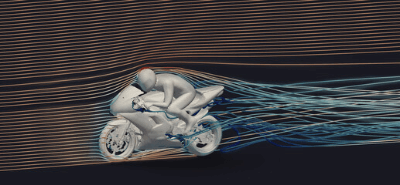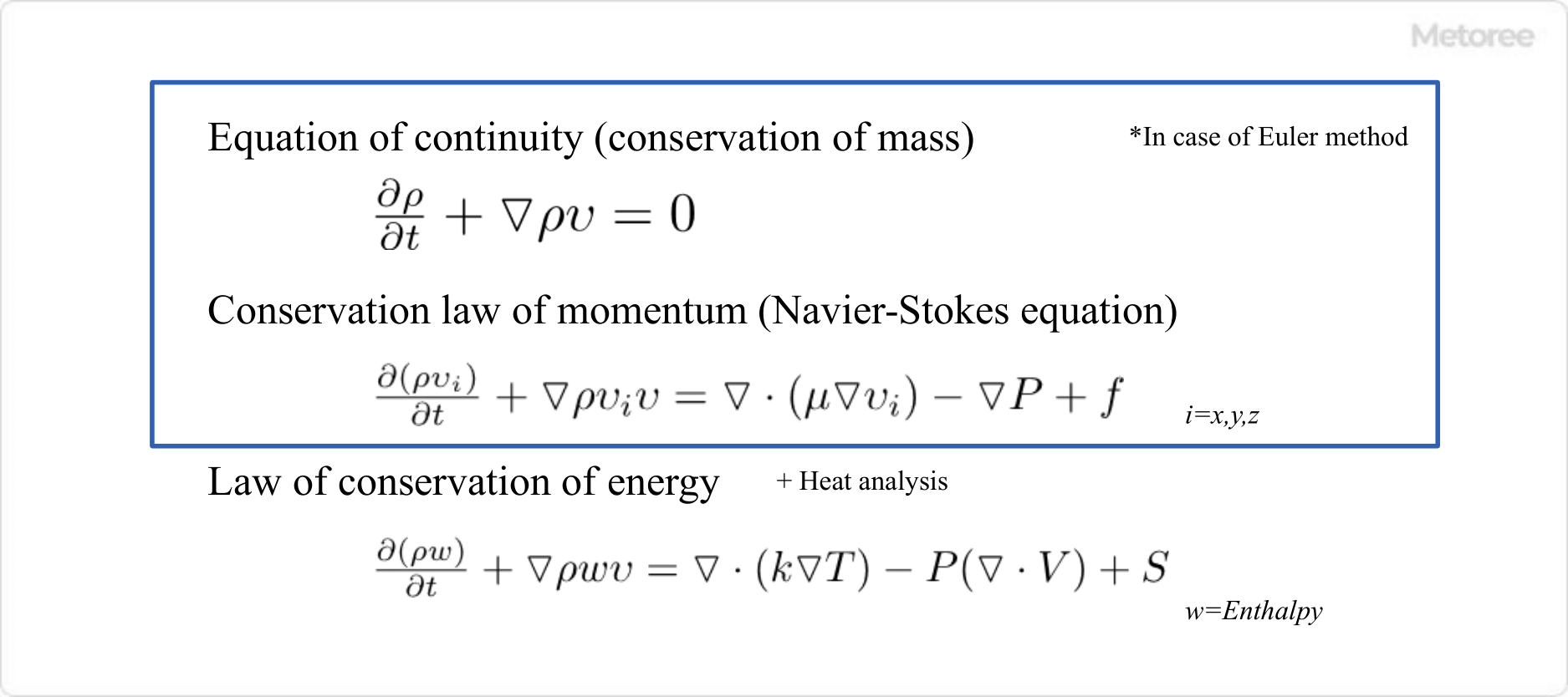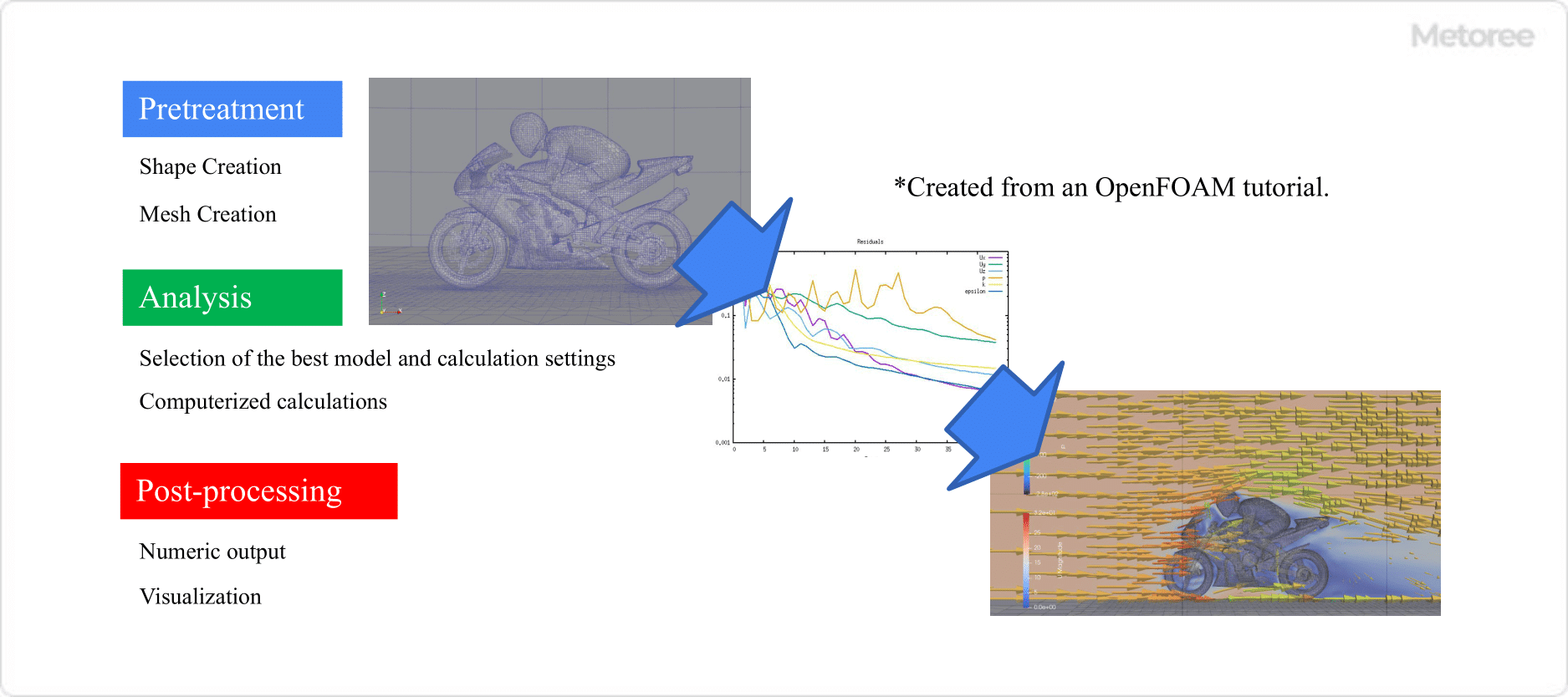What Is Computational Fluid Dynamics (CFD) Software?

Computational Fluid Dynamics (CFD) Software is used to analyze the flow of air, water, and other fluids through simulation.
Computational Fluid Dynamics (CFD) Software is used in the design stage because it is less costly and time-consuming than experiments. In addition, it is generally difficult and costly to read the flow motion of fluids such as liquids and gases through experiments.
Therefore, Computational Fluid Dynamics (CFD) Software is useful for fluid motion in high-temperature, high-pressure environments where measuring instruments cannot be used, and in environments where large-scale experiments cannot be conducted, such as tsunamis and rivers.
Uses of Computational Fluid Dynamics (CFD) Software
Computational Fluid Dynamics (CFD) Software is used in research and development of various products, on production lines, and for weather forecasting. (There is a wide range of applications, such as analyzing the state of flow and pressure inside an automobile’s engine, reducing the resistance to which the automobile is subjected, and developing cooling mechanisms for CPUs and other devices.
- Analysis of the force exerted by air on a car while it is running
- Analysis of airflow in a room when air conditioning is used
- Analysis of airflow to improve the efficiency of cooling mechanisms for machines that generate heat
- Analysis of wind direction and air pressure for weather forecasting
- Analysis of rotation of screw blades, etc.
Principle of Computational Fluid Dynamics (CFD) Software

Figure 1. Principle of fluid analysis (mechanics)
Computational Fluid Dynamics Software analyzes fluid flow by numerically computing the following two basic equations
1. Continuity Equation (Conservation of Mass)
This is the rule that a fluid does not spring out of nothing or suddenly disappear in an empty space. It means that water does not suddenly spring out of nothing.
2. Conservation Law of Momentum (Navier-Stokes Equations)
This is the law that the intensity of an object’s motion does not change unless some external force is applied. It is actually derived from Newton’s equation of motion.
In addition, when analyzing temperature and other parameters, the equation is solved to include the conservation of energy.
Computational Fluid Dynamics (CFD) Software

Figure 2. Structure of fluid analysis
Commercial Computational Fluid Dynamics (CFD) Software often includes the model creation part, the simulation execution part, and the post-processing part as a set. In addition, there are also software that
1. Preprocessing and Model Creation
Model creation is the process of creating the geometry for fluid analysis. In most cases, file formats such as STEP, IGES, and Parasolid created in 3D CAD can be used. Computational Fluid Dynamics (CFD) Software also provides the ability to set boundary conditions such as where the fluid flows into the structure and where the temperature is constant.
To perform the calculations, the geometry of the model is represented by a grid called a mesh. Creating a clean mesh is an important factor in increasing the speed and accuracy of the analysis. Modeling software is equipped with a function that allows the user to easily select the size of the mesh and automatically generate a high-quality mesh.
2. Simulation Execution Part
This section refers to the part commonly referred to as the solver. Computational Fluid Dynamics (CFD) Software in the narrow sense refers only to this part. The solver is equipped with functions for solving continuity equations, momentum conservation equations, energy conservation equations, and so on.
Nowadays, solvers are equipped with functions to solve more complex models and are able to perform calculations at higher speeds in response to improvements in computer performance.
3. Post-processing Part
Visualization of the analysis results in 3D models and other forms allows for a more intuitive understanding of the analysis results. The analysis function has different features depending on the product.
From the calculation results, contour plots showing pressure and temperature distributions in different colors, vector plots showing flow with arrows, and stream plots with lines can be created.
Types of Computational Fluid Dynamics (CFD) Software

Figure 3. Types of fluid analysis
The first way to represent fluids is to discretize space. The finite element method and the finite volume method are well-known discretization methods. On the other hand, there is also the particle method, which represents the fluid as a collection of particles.
As there are various CAE-specific methods, techniques, and functions, it is necessary to set up the most appropriate method and conditions for each simulation, depending on the phenomenon to be simulated. Computational Fluid Dynamics (CFD) Software is designed to be simple and easy to use, but there are also multi-functional software that is used by professionals in thermal fluid analysis.
Although they vary from company to company, the following points often make a difference as a rough guide.
- Number of turbulence models
- Multiphase flow analysis capability
- Non-Newtonian fluid analysis capability
- Coupled analysis capability (e.g., structural analysis)
- Ability to handle compressible fluids
In addition, there are differences in licensing schemes. Select the most appropriate software by clarifying the purpose of use and required functions.